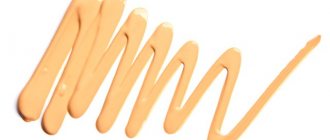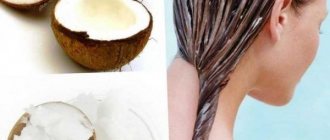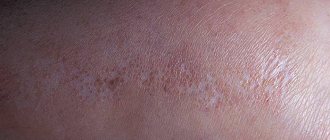Tips for making a mold
To give the paraffin the desired shape, it must first be melted. For this you will need:
- the remains of unnecessary candles;
- metal cup;
- container with water;
- wooden stick.
First, the cinders are crushed with a knife, removing the wicks from them. A container of water is placed on gas and an iron mug with paraffin is lowered into it. After it acquires a liquid state, it is poured into a mold. Glass containers are not used for melting because they may burst. To position the wick strictly in the center, use a wooden stick.
For casting, rigid containers made of plastic, metal or silicone are used. Cans, porcelain cups and various boxes are also used. Before pouring wax, the surface is lubricated with a special substance that will allow the wax to easily separate from the walls of the mold. It could be dishwashing liquid, but in no case should it be olia. After this, greasy stains that are difficult to remove remain on the surface.
When making candles, you can use all your imagination and end up with your own masterpiece using only available materials.
Paraffin is a mixture of hydrocarbons, a wax-like substance with a low melting point. It is obtained from oil and is widely used in industry, cosmetology and other industries. When melted, paraffin turns into a clear liquid. Candles are made from it and used as a lubricant in the manufacture of wooden furniture.
Vaseline is made from paraffin, which is part of anti-corrosion coatings. It is also used in cosmetology for paraffin therapy procedures; it is even used to lubricate skis and bicycle chains. The scope of application of this substance is very wide and, most likely, paraffin products are found in every home.
Paraffin and its amazing properties
Everyone is familiar with paraffin candles. They first began to be used for lighting at the turn of the 19th and 20th centuries. But for medical purposes, its amazing thermal properties were first proposed by the French physician Bart de Sandorff in 1902.
Later, paraffin therapy became a fairly popular method of treating wounded soldiers, and even now it is a common method of recovery from injuries and diseases of the musculoskeletal system, pathologies of internal organs, diseases of the nervous system and skin.
What is paraffin? If you have seen paraffin candles, but imagine the appearance of paraffin. However, in medical practice and cosmetology, 100% paraffin, purified from all impurities, is used.
Paraffin is a petroleum derivative, a waxy mixture of hydrocarbons. It heats up and melts quickly, and releases heat slowly. Melting point – 52-55ºС.
Types of paraffin
View gallery
Depending on the melting point, paraffins are divided into liquid, solid and microcrystalline. According to the degree of purification, they are divided into purified and unrefined. The former contain a large percentage of oil (up to 30% by weight), while the unrefined ones contain only 6%. The color of paraffin indicates the degree of its purification. White is refined, and yellow or brown is unrefined.
There are many ways to use paraffin at home: treatment and warming with it, cosmetic procedures, making candles and various other creative items. To carry out cosmetic procedures at home, you need to know how to melt paraffin at home.
The mechanism of action of paraffin
When applying paraffin, the temperature in the underlying tissues increases by 1-3ºС. As a result, hyperemia occurs and increased blood flow at the site of paraffin application, metabolic processes improve, resulting in the following therapeutic effects:
- resorption of infiltrates,
- the inflammatory process is reduced,
- damaged tissues are restored,
- regenerative processes are activated,
- blood supply to problem areas improves,
- muscle spasms are relieved,
- the pain subsides,
- metabolic processes in the underlying organs and tissues improve.
As paraffin cools down, its volume decreases by up to 10%, while slightly compressing the skin and acting like a light massage.
The thermal effect occurs due to the slow cooling of the paraffin. The skin pores expand and sweat is released from them along with toxins and various waste products. Moreover, the moisture does not evaporate: it remains under the paraffin, leaving the skin moisturized. Harmful substances released with sweat are not absorbed back into the skin; their molecules are heavier than water, but remain on paraffin, which is then thrown away.
During the cosmetic procedure, microcirculation improves, making the skin moisturized and soft. As paraffin cools, it tightens the skin, making it immobile, and this helps smooth out wrinkles not only on the face, but also on the hands, which is now often observed even in young girls. When performing the procedure on the hands, paraffin helps strengthen the nail plates, protecting them from delamination and giving them strength and a healthy appearance.
Methods
It is worth understanding that paraffin left over from burnt candles is not suitable for cosmetic procedures. For this purpose, special cosmetic paraffin is used. It can be purchased at pharmacies or specialty stores. Do you know how to melt paraffin? The easiest way is a water bath. To do this, you will need two metal containers of different diameters, water for heating and a thermometer. Stages:
- Pour about a third of water into a larger diameter container and boil it on the stove.
- Chop the paraffin into small pieces. It is most convenient to do this on newspaper or large format paper. When cutting, the paraffin will crumble. To do everything carefully and not lose the valuable substance, the litter will come in handy.
- Place the finely chopped paraffin in a container of smaller diameter and shake off the crumbs from the newspaper there.
- After the water boils, measure its temperature with a thermometer; it should show no more than 55 - 80 °C. At higher temperatures, the paraffin will begin to evaporate.
- Reduce the gas and place a smaller container on top of the boiling water so that its bottom touches the water.
- Stir the paraffin with a metal spoon until it completely melts.
- When melting, the volume of the substance in the container will decrease. If it is not enough, you can add a few more pieces to the already melted paraffin.
Make sure the container is completely dry before melting the paraffin. Water ingress into liquid paraffin is strictly prohibited. When it comes into contact with water, the hot mass will shoot and splash, and contact with the skin may cause a burn.
The use of hot paraffin is widely used in cosmetology. These treatments make the skin velvety and smooth and are a good way to restore its elasticity. You already know how to melt paraffin in a water bath, and in beauty salons they use special melting baths for this. To carry out one procedure, you need to melt half a kilo of paraffin. This process looks like this:
- Before melting the paraffin and starting to create a mask for your hands, wash them well and lubricate them with moisturizer. The principle of operation of a paraffin mask is that it warms up the skin of the hands, opens pores and improves blood circulation, allowing the upper layers of the epidermis to absorb the beneficial components of creams better than usual.
- Dip your hands into liquid paraffin that has cooled to a tolerable temperature, completely straightening your fingers so that the liquid covers the entire skin of your hands. Repeat the procedure several times, allowing the paraffin to harden a little after each time you put your hands in the container. Thus, a layer of paraffin will appear on the brushes, completely enveloping them.
- After this, hands with warm paraffin should be wrapped in cling film, polyethylene, or put on plastic gloves. Wrap your hands in a terry towel over your gloves and keep it there for about 20 minutes.
- After 20 minutes, you can remove the paraffin from your hands and apply a nourishing cream.
As mentioned above, for this procedure it is necessary to use special cosmetic paraffin. It is strictly contraindicated to make these baths from yellow, unrefined paraffin. It contains substances that have a harmful effect on the skin. Using a cosmetic substance, you can be sure that you will not harm your hands. In addition, it is often produced with the addition of various essential oils and nutritional components.
Paraffin grades are determined according to the degree of purification. Highly purified paraffin P-1 has a melting point of no lower than 54 degrees. Suitable for food products. Paraffin grade B-2 with a melting point of 52-54 Gy. used in industry. T-1 is used in the national economy, the melting point is 52-58 degrees. T-3 paraffin is used to impregnate paper; it melts at a temperature of 50-56 degrees.
At home, melting paraffin in a water bath is the easiest way. It can be applied anywhere. Having previously crushed the material, pour it into a small container. We place the container in another bowl with water, of a larger diameter, water, in a larger diameter bowl, bring it to a boil, continuously stir the petroleum wax. The process takes 7-10 minutes. You can strain the raw materials.
In the microwave
Every home has a microwave. Melting paraffin with such a device is not difficult. Place finely chopped pieces of material in a bowl designed for microwaves and turn on the desired mode. It is better to cover the container with wax with a cloth, there may be splashes. A steamer is also a good option. Pour some water into the bottom of the steamer, put paraffin into a heat-resistant dish, and set the timer to no higher than 100 degrees.
On alcohol
Petroleum wax does not dissolve well in cold alcohol. To prepare the mixture at home, heat the alcohol and paraffin, mix, and heat again over very low heat. Bring the liquid to a uniform shape. You can fill the raw material with chloroform and let it sit for several hours. The principle of cooking with turpentine is the same as when cooking with alcohol. The only difference is that turpentine must be added gradually and in small portions.
In gasoline
The first method: take three parts paraffin and one part gasoline. We cut the purified wax into small pieces and pour it into a special bowl. Fill with gasoline until the paraffin disappears. Infuse the mixture for two days. Second option: cut the product into the smallest pieces, place it in a water bath preheated to 70 Gy. When the paraffin begins to melt, carefully pour in gasoline in small portions. Mix the finished mixture well and close tightly.
Prepared mixtures based on alcohol and turpentine can be used for medicinal purposes. It helps well with pain in the limbs, in cosmetics, overseas new products can easily replace it. According to all the rules, the prepared composition using gasoline is suitable for polishing furniture. It would be a good idea to polish your car with a mixture of gasoline. It will shine like new. The main thing is to follow fire safety rules when preparing mixtures with sparta and gasoline. take care of yourself
Indications for use of the technique
Indications for paraffin therapy are divided into cosmetic and medical. Medical indications include the following diseases:
- Dysfunctions of the musculoskeletal system (arthritis, radiculitis, fractures, sprains and ligament tears);
- Skin diseases;
- Varicose veins;
- Trophic ulcers;
- Frostbite and burns;
- Gynecological diseases in women;
- Severe diseases of internal organs;
- Polio.
Cosmetic procedures are performed for the following problems:
- Severe dry skin;
- Tendency to swelling;
- Age-related changes (ptosis of the oval face, double chin);
- Premature aging;
- Expression wrinkles;
- Deep creases and folds;
- Aging of the hands;
- Cellulite;
- Cicatricial changes in the skin.
The use of paraffin is justified only in cases where irreversible anatomical changes in the affected organs or tissues have not yet occurred in the body. The greatest effect will be noticeable if paraffin therapy is one of the components of complex treatment for subacute processes or in the initial period of the chronic course of the disease. The therapeutic effect will be effective when
- injuries and diseases of an inflammatory or degenerative nature of the musculoskeletal system (fractures, dislocations, sprains, ligament and muscle ruptures, arthritis, arthrosis, osteochondrosis),
- diseases of the peripheral nervous system (radiculitis, neuralgia, neuritis),
- chronic respiratory diseases (bronchitis, pneumonia, tracheitis, etc.), liver diseases (hepatitis), peptic ulcers,
- hypertension,
- chronic diseases of the female genital area,
- varicose veins;
- adhesive disease,
- skin diseases, trophic ulcers, burns, frostbite, wounds.
No less popular is the use of paraffin in beauty salons for cleansing and rejuvenating the skin of the face, hands and feet. Here, paraffins are used with various additives and flavors, for example, honey, vitamins, essential oils, anti-inflammatory and moisturizing components.
Paraffin baths and masks will help if you want to hide age-related skin changes, remove wrinkles on the face and hands, and get rid of a double chin.
The advantages of the cosmetic effect during cosmetic procedures include getting rid of excess weight and cellulite, and will help minimize scarring on the skin.
Indications
Cosmetologists recommend performing paraffin therapy for women who have the following problems:
- aging facial skin;
- presence of black spots on the skin;
- fine wrinkles;
- double chin;
- saggy skin folds in the cheek area;
- swelling of the face;
- blurry facial contour;
- fatigue of the hands and feet;
- low muscle tone;
- cracked heels;
- swelling of the hands and feet;
- detachment of the nail plate.
to contents ^
Can paraffin be melted in a microwave or oven?
Now let's find out other nuances of this process. So, many, in search of an answer to the question of how to melt paraffin at home, think about the possibility of doing it in a microwave or oven. Indeed, it is possible to do this.
In the first case, you should set the defrost mode and melt the paraffin for 2-3 minutes, after crushing it. Be sure to cover the paraffin container with a lid and use microwave-safe containers.
In the oven, paraffin can be melted at a temperature of 70-80 ° C. Be extremely careful when removing a container of melted material. Allow the mixture to cool slightly to avoid burns if the hot liquid comes into contact with your skin.
Paraffin compress at home. Paraffin therapy: general rules and recipes
In any case, the paraffin therapy procedure must begin by melting the paraffin in a water bath.
After which, it must be cooled to approximately 60 degrees so that the product can have the effect of warming up the joints. If paraffin will be used to treat arthritis, then it is necessary to apply the already melted and cooled medicinal paraffin with a flat brush to the area that needs therapy. Then you need to cover the area with a small amount of polyethylene and wrap it in a warm blanket. Keep for 1 hour.
You can also relieve the symptoms of arthritis using paraffin compresses. You need to fold a piece of fabric into 8-10 layers and make a napkin. Dip it into already melted paraffin. Wring out the napkin and apply to the painful area. In this case, it should already be lubricated with paraffin, as mentioned above. And the area also needs to be covered with a warm blanket or thick woolen scarf.
You can also use a paraffin cake. To do this, you need to form a cake from frozen paraffin (it needs to feel like plasticine). After this, apply it to the sore spot, secure it and follow all the recommendations listed above.
If a person has hip dysplasia, then paraffin therapy will work great if it is used in combination with massage and physiotherapy.
An effective method of paraffin treatment for hip joints: you need to melt 500 g of paraffin in a water bath, adding 250 g of ozokerite. After this, add Vaseline oil to the mixture and mix. Pour the entire mixture into a mold, 25-20 cm in size (depending on the size of the patient’s buttocks). The layer should be at least 1 cm. After 10-20 minutes, after the mass has cooled and hardened, you must very carefully remove it from the mold and apply it to the sore spot. After this, wrap it in plastic wrap and wrap it in a warm blanket. Stay with paraffin for an hour.
You can use paraffin therapy to treat joints at home, you just need to strictly follow all the rules and contraindications in order to protect your health from unexpected and unpleasant side effects.
Contraindications
Despite the wide range of healing and rejuvenating properties, the paraffin therapy procedure, both at home and when performed professionally, has its contraindications:
- High blood pressure;
- Ischemic disease and myocardial infarction;
- Liver dysfunction;
- Cirrhosis;
- Inflammatory processes;
- Chronic diseases of internal organs in the acute stage;
- Chronic glomerulonephritis;
- Angina;
- Atherosclerosis;
- Open wounds and fistulas;
- Purulent inflammation, demodicosis and other skin diseases;
- Telangiectasia;
- Hypertrichosis;
- Diabetes;
- Allergic reactions and individual intolerance to components.
The thermal paraffin therapy procedure has many beneficial functions for the skin of the face and body. It is considered the easiest and most pleasant, and can be done either by a specialist or at home. Paraffin therapy is especially relevant in the winter season, when the skin is especially susceptible to thinning and chapping. The therapeutic and cosmetological effect is observed after the first session.
Procedures with hot paraffin are not recommended in the following cases:
- for open wounds on the skin of the hands and face;
- purulent inflammation;
- fungal diseases and eczema;
- diabetes;
- vascular diseases;
- asthma.
The beneficial qualities of paraffin do not end there. It is often used for home heating for bronchitis and common colds. Here it is also important to use a special cosmetic substance, which can be purchased in pharmacies or specialty stores.
Candle making at home is a fun and not too expensive hobby. One of the most popular trends in making candles with your own hands is candle making from wax or paraffin.
Candles made from these materials are solid and hold their shape, which opens up the widest scope for the imagination of craftsmen. Such candles can be cast in a wide variety of shapes, made multi-colored, decorated with various materials, and also carved. Traditionally, such candles are an invariable attribute of weddings and other celebrations.
Making a candle with your own hands is generally not difficult - you need to melt wax or paraffin, pour it into a mold, install a wick and wait for it to harden.
To make candles, you can purchase ready-made materials: candle wax or candle paraffin-stearine mass and wicks. You can also buy ordinary inexpensive candles, carefully cut them into several parts without damaging the wick. Carefully remove these parts from the wick and the main ingredients are ready. The candle mass will be melted down and the wick will be used in a new candle.
You can also make candle mass and wicks yourself.
To prepare candle mass, paraffin mixed with stearin is usually used. Optimal proportion: 80% paraffin and 20% stearin. This composition makes it possible to obtain durable, long-burning candles that do not float too much when burning.
A more expensive option for candle mass is beeswax. This candle is completely natural, which is, of course, a big plus. It should be remembered that beeswax is always yellowish, even almost orange. To make colored wax candles, you should choose wax that is as light as possible; the colors will be delicate, pastel. If you plan to make a white or brightly colored candle, then you must use paraffin and stearin.
How to make a wick is described here.
Candles are made by pouring the molten mass into a mold.
It is necessary to melt the candle mass in a water bath, avoiding overheating and observing safety precautions. The water level in the water bath must be maintained by carefully adding water as needed; water is poured without reaching the top of the container. The optimal temperature for pouring into the mold is about 80 degrees.
Before adding candle mass, it is advisable to pierce the candle around the wick in several places (depending on the diameter of the candle) without reaching a couple of cm to the bottom - this way more air will come out of the candle and it is likely that the candle will no longer shrink and you will not have to top it up again.
- The cooling process of the candle should not be accelerated, otherwise the candle may crack.
- The form must be clean and dry!
The prepared mold for pouring must be lubricated with a special lubricant (containing silicone) or dishwashing liquid - this will make it easier to remove the candle from the mold.
It is advisable to heat the mold a little (up to 60 degrees), for example, with a hairdryer.
Before pouring the candle mass, install the wick.
It should be located strictly in the middle of the future candle. Often the mold has a small hole where the future top of the candle will be (in such molds the candle is poured upside down), then the wick is pulled into this hole and a knot is tied. At the top of the mold, a structure of holders is installed (toothpicks or orange sticks are often used), to which the second end of the wick is wound, and thus the wick is stretched and fixed in the right place.
If there is no such hole and the candle is filled from bottom to top, then the wick is “glued” to a drop of wax from below, and the same holding structure of sticks is on top. You can also use the wick, which is already placed in the holder, and place it on the bottom of the candle, and on top - well, the same design of sticks)))
Convenient to use clothespin.
The molten candle mass is very liquid, so it flows even through small holes. Therefore, when pouring a mold with a hole and a knot, it is recommended to first pour a small portion of the candle mass and remelt the leaked wax. Well, then fill the candle completely.
As molds, craftsmen use both special molds, including very complex shapes, as well as molds for soap and various available materials - cans, boxes, paper cones. Even egg shells can make great molds!
Molds for candles can be detachable or solid.
If you use a split mold, then you need to remove the candle from it without waiting for it to completely harden. The half-hardened candle is removed and the growths at the junction of the mold are carefully cut off with a heated knife. Then the candle is placed on a flat surface until it cools completely.
Candles are removed from solid molds after complete hardening. The candle mass shrinks slightly, so the candle can be removed without much effort. If you still cannot remove the candle from the mold, you can gently tap the mold on the table or briefly dip it in hot water.
Candles don’t have to be removed from the mold if that’s how it’s intended; for example, colored candles look great in glass cups.
Candles can be made in different colors.
They can only be colored with fat-soluble dyes, which are added to the melted mass. If you are making a candle with essential oils, it is recommended to add the oils first and then the dyes.
Candles can be poured in layers. After the previous layer has partially hardened, a new layer is poured onto it, the temperature of which should be 75-80 degrees - the new layer should slightly submerge the previous one in order to adhere well to it, but not deform it too much.
To make carved candles, they are made multi-layered, with multi-colored layers. New layers on the candle are obtained by dipping it into the melted mass with a new color. Dipping should not be long - otherwise the previous layer will melt greatly.
You can decorate candles in a variety of ways.
Cereals, shells, dried flowers, and beads are used.
One of the popular decoration methods among beginners is candles with coffee beans. A smaller mold is placed in the mold, coffee beans are poured into the space between the molds and filled with wax. Once cured, the smaller mold is removed, a wick is placed in the center, and the space is filled with wax.
External decor for candles is done quite simply - use a heated tool to heat the wax on the candle and glue the elements there.
For decoration using the decoupage technique, the paper is smoothed with a heated spoon.
A more complex area is carving candles.
Be sure to review general candle making guidelines and safety precautions here.
But not everyone can benefit from paraffin baths and applications. Significant harm to health is possible if there is a history of:
- acute inflammatory diseases or exacerbation of chronic diseases;
- coronary heart disease, exertional angina, severe atherosclerosis,
- chronic glamerulonephritis, liver cirrhosis, diabetes mellitus, high blood pressure;
- the presence of a large number of papillomas, moles and warts in the treated area;
- poor blood clotting;
- pregnancy and breastfeeding.
It is strictly forbidden to carry out such a procedure if there are any open wounds, ulcers, ulcers, eczema or weeping dermatitis on the skin.
How to make decorative candles with your own hands
What you need
Candle material.
Wax, paraffin or stearin. For people new to candle making, it is best to start with paraffin wax as it is easier to work with. Paraffin can be purchased or obtained from white household candles or their remains.
Stearine can be easily obtained from laundry soap. Grate the soap on a coarse grater or slice it with a knife. Place the shavings in a metal container, fill with water until the liquid covers them and send to melt in a water bath. When the soap has dissolved, remove it from the heat and add the vinegar. A thick mass will float to the surface, which needs to be collected with a spoon after cooling. This mass is stearin; it must be rinsed several times under water and wrapped in a clean cloth to remove excess moisture.
Wick
. For the wick you will need a thick cotton thread, for example, braided or twisted floss. Synthetic materials for candles are unsuitable because they burn quickly and smell unpleasant. It's easier to get a wick from regular candles.
Form
. You can use different containers as a mold for making candles: coffee jars, durable packaging, sand molds and plastic balls. If you decide to make a narrowed or round candle, the container you will use for this, for example, a plastic ball, should be cut lengthwise and a hole with a diameter of at least 1 cm should be made at the top so that the composition can be freely poured into it.
Dyes
. You can use dry food coloring, wax crayons, or natural ingredients, such as cocoa. But alcohol- or water-based paints are not suitable for making candles.
Melting utensils
. A small saucepan or bowl that can be conveniently placed in a steam bath will do.
Additional materials
. You will need them to decorate and add fragrance to the product. Since DIY candles provide a lot of room for imagination, you can use whatever you like, for example, coffee, dried flowers, shells, beads and sparkles. You can scent the candles with your favorite essential oils, vanilla or cinnamon.
Progress
- Grind the selected raw material and place it in a water bath. If you are using household candles, be sure to remove the wick. Remains of candles must be cleaned of black soot. While stirring, wait until the mass melts. Dip the wick into it several times until it is saturated and set it aside.
- Add flavoring and coloring to the mixture. If you use wax crayons, you need to grind them using a fine grater. By using two or more colors you can achieve a marbled look. And by dividing the mass into several parts and painting them in different colors, you can make a multi-colored candle.
- Grease the mold chosen for the candle with vegetable oil or dishwashing detergent. Attach the tip of the wick to a stick, toothpick or pencil and place it on the mold so that the free end of the wick passes through its middle and reaches the bottom. For reliability, you can attach a weight, such as a nut, to the free part of the wick.
- Fill the mold with the melted mass, wait until it hardens completely, then remove the candle by pulling the wick. If the candle is difficult to remove, immerse the mold in hot water.
- You can decorate candles in different ways, for example, place dried flowers, blades of grass and seeds around the edges of the mold and then pour in the melted mass. To make a coffee candle, you need to pour a layer of coffee beans on the bottom of the mold, fill them with liquid candle material and put the beans on top again. Decorating the product with beads, rhinestones and shells is best done after it has hardened and been removed from the mold. Decorative elements are inserted into the melted surface of the candle or attached with glue.
This post-instruction is for those who prefer really nice-smelling candles to the chemicals that are sold in our stores. Of course, there are manufacturers who add truly natural oils to their products, but these candles are very expensive. So if you have a desire to tinker a little and try your hand at making candles, have patience and, of course, free time, this post is just for you.
The effect of paraffin therapy
Paraffin therapy is used mainly for hands during a special manicure. However, the procedure is also used for the skin of the face, legs and other areas of the body, for example, paraffin wraps to treat cellulite.
- Skin whitening;
- Rejuvenation and cleansing of the skin;
- Powerful hydration;
- Protection against cracks and dryness;
- Elimination of gravitational ptosis and double chin;
- Correction of facial wrinkles;
- Lymphatic drainage effect.
The described hand baths and face masks have a complex therapeutic effect on the skin and joints. Paraffin therapy is recommended in the presence of peeling and microcracks on the skin, pigmentation, frostbite, arthritis and arthrosis. This procedure also has a targeted restorative effect on the nail plate; if the nails are peeling or often break, paraffin therapy is perfect for restoring their structure.
Paraffin therapy - how to do it?
It is quite possible to carry out paraffin therapy at home, but provided that you do not have diseases that are contraindicated for paraffin therapy. Moreover, the cost of carrying out such a procedure in salons ranges from 500 - 2000 rubles. in one session. Carrying out the procedure at home is not difficult if you prepare in advance everything you need to perform it.
I offer you a step-by-step procedure at home. What will you need?
- Container for melting paraffin.
- A container (bath) for immersing hands or feet in paraffin.
- Brush for applying paraffin.
- Cosmetics for moisturizing the skin before applying paraffin and nourishing creams.
- Food film or polyethylene film.
- Gauze face mask.
- Depending on where you will apply the paraffin, you will need warm mittens, socks or a blanket.
- Assistant.
For hands
Before starting the procedure, it is necessary to melt the paraffin in a paraffin heater, in a water bath or in a separate container until it becomes liquid. It is important to remember that not a drop of water should get into the paraffin, otherwise you may get a skin burn during the procedure.
- Paraffin is applied to cleansed hand skin, so wash your hands first and remove nail polish. Instead of soap, try making this scrub: in equal parts, take powdered milk or baby formula, rolled oats (no need to grind it) and sea salt. You can prepare more scrub, put it in a closed jar and use it if necessary. Scrubbing is necessary to remove dead skin particles from your hands.
- Then take a little of the resulting scrub into your hands, add a little cosmetic oil (for example, jojoba, olive or almond oil) and rub the scrub into the skin with light massage movements. Don't forget to rub the palms and backs of your hands, between your fingers. Then dry your hands well with a towel and proceed to the next step.
- This is a very important point. Before applying paraffin, it is important to lubricate your hands with cream. And depending on what components are in this cream, those beneficial substances will then penetrate the skin. You can make this cream: take a tablespoon of wax, melt it in a water bath, add a tablespoon (or one of them) of olive oil, calendula oil, sea buckthorn, St. John's wort, etc. You can also add 5 drops of vitamin A and E or add the contents of the Aevit capsule. Apply the cream to your hands and be sure to rub the cream into the skin so that your hands become warm or hot - cold hands should not be immersed in paraffin. We need the cream so that after the procedure we can easily remove the paraffin mask.
- Pour the liquid paraffin into a container where you will dip your hands. If you have a bath with a paraffin heater, it will be even better. First, check with one finger to see if it is hot. The paraffin temperature should be pleasant.
- Place your hands in a container of paraffin and immediately remove them from there. After a few seconds, repeat immersing your brushes in the paraffin, doing this several times until you end up with thick paraffin gloves. If the skin of your hands is sensitive, then apply the first layer with a special brush, and then dip your hands in a bath of paraffin, also in several approaches.
- Then you will need an assistant, he will help you wrap your hands with cling film or plastic wrap, and then put on warm mittens or thermal gloves.
- The duration of the procedure is no more than 20 minutes. After this time, carefully remove the used paraffin and throw it away; it has absorbed unnecessary waste and toxins, so it is not suitable for further use.
- At the end of the procedure, lubricate your hands with nourishing cream and massage lightly. If the procedure was carried out in the evening, then put on cotton gloves and leave them while you sleep, and in the morning you will see how tender and soft your hands have become.
The procedure can be repeated no more than once a week. Since the procedure takes a lot of time, it is better to carry it out on a weekend. But this procedure is worth it.
For face
Before starting the scrub or peeling procedure, clean your face and apply a nourishing cream to your face. You can add various nutritional supplements to the nourishing cream, then the effect of the procedure will be even more effective.
Take a comfortable position, relax. It will be good if an assistant helps you apply paraffin to your face. Apply the first layer with a brush dipped in melted paraffin, avoiding the areas around the eyes. Having finished applying the first layer, place a piece of gauze prepared in advance on your face so that it completely covers your face and as shown in the photo above.
After a few seconds, apply the next layer of paraffin on top of the gauze pad, applying 5-7 layers at intervals of a few seconds. After 30-40 minutes, carefully remove the paraffin mask from bottom to top.
At the end of the procedure, apply a nourishing cream to your face according to your skin type.
For legs
Before starting the procedure, clean the rough skin of your feet with a scrub, pumice stone or electric file. After this, be sure to apply moisturizer.
The procedure for the legs itself is not much different from a similar procedure for the hands. You also dip your feet in paraffin several times, then wrap your feet in cling film several times and put on warm socks.
After exposure for 20-30 minutes, remove the paraffin and apply nourishing cream to your feet.
For body
First you will need to melt the paraffin to a liquid state at a temperature of 60-90º in special paraffin heaters or in a water bath. It is recommended to use sterile paraffin for therapeutic purposes. This can be achieved by heating it to a temperature of 110-140º for 15 minutes. Make sure that no water gets into the paraffin!
For applications, paraffin is used in its pure form, with the addition of therapeutic mud, ozokerite and birch powder to enhance the therapeutic effect.
Immediately before the procedure, the surface of the skin is lubricated with Vaseline or a mixture of paraffin with fish oil or cottonseed oil is applied from a spray bottle. More often, this application is used on wounds, burns and ulcerated surfaces. But I would not recommend applying paraffin mixtures to such surfaces yourself; let doctors do this better.
And as health or recovery procedures after injuries, after relieving pain from arthritis, radiculitis, osteochondrosis, etc. This procedure can be carried out at home.
To do this, liquid paraffin is applied to problem areas on a surface pre-lubricated with petroleum jelly in several stages with a flat brush: the collar area, the lumbar region, and the joints, so that you end up with a layer of about half a centimeter. Then cover the paraffin application with cling film or plastic wrap on top, and wrap it with something warm on top. for example, a blanket.
The duration of the procedure is 30-60 minutes; after removing the paraffin application, you need to rest for an hour, covered with something warm. A course of treatment requires no more than 15 procedures. A repeated course of paraffin therapy can be carried out no earlier than in a month or two.
There is a slightly different way to prepare a paraffin wax application, and I find this method to be simpler. To do this, pour the melted paraffin into a flat container to create a layer of paraffin 2-3 cm thick. Wait a little until the paraffin hardens a little, and then, overturning the container, transfer it to cling film or plastic wrap.
Using hand and foot baths
After preparing the necessary equipment, you need to proceed directly to therapy. The miniature bathtub is laid out on a flat surface (on a table or floor, depending on the part of the body being treated). Then you need to take 2-4 bars of paraffin for baths, cut it into pieces and place it in a container. After this, you need to turn on the device and melt the substance, setting the appropriate mode for this. Usually this procedure takes 1-2 hours, it depends on the amount of cosmetic product.
While the wax is heating up, you should prepare your legs or arms for manipulation. To do this, it is recommended to treat the selected area of the body with a scrub. If your nails are painted, be sure to remove the polish. After which you need to smear your hands or feet with a nourishing cream, it is better if it is oil-based. But this information will help you understand how liquid paraffin is used in cosmetics and how effective this procedure is.
Next, you can carry out paraffin baths, which are very simple to do. To do this, you need to dip your arms up to your hands in the melted wax, leave for 60-120 seconds, and then remove the limbs. The legs are dipped according to the same principle, but only to the bones.
But how paraffin therapy for hands is carried out and how the procedure occurs is described here.
The substance tends to quickly harden on the hands, enveloping them in the form of gloves. This procedure should be repeated up to 6 times, but you can do it a little less or more. This depends on the desired thickness of the paraffin layer.
The optimal option is 1-2 cm. Upon completion of such manipulations, the limbs should be wrapped in cling film and put on mittens or socks. This will help keep you warm for as long as possible. It is necessary to keep the melted paraffin for 15-20 minutes, after which the remaining substance should be carefully removed from the body and washed off with warm water. It is recommended to perform such cosmetic manipulations no more than once every 7 days. The paraffin remaining in the bath can be reused, but the product that was on the hands or feet should be thrown away. The used material has already absorbed toxic substances and contaminants, so it cannot be reused. It is also worth paying attention to this. How to make paraffin hand masks at home.
The video shows paraffin therapy at home:
Paraffin at home is often used in the form of baths, since they warm up the epidermis and its deep tissues well. Under the influence of high temperatures, the skin is cleansed and eliminated, as well as actively moisturized. Paraffin hand masks have a good effect on nails and cuticles, and also restore elasticity and radiance to the epidermis. Also, this remedy allows you to get rid of cracks on your hands or feet. You can also use a paraffin face mask and how the procedure is carried out can be seen here.










